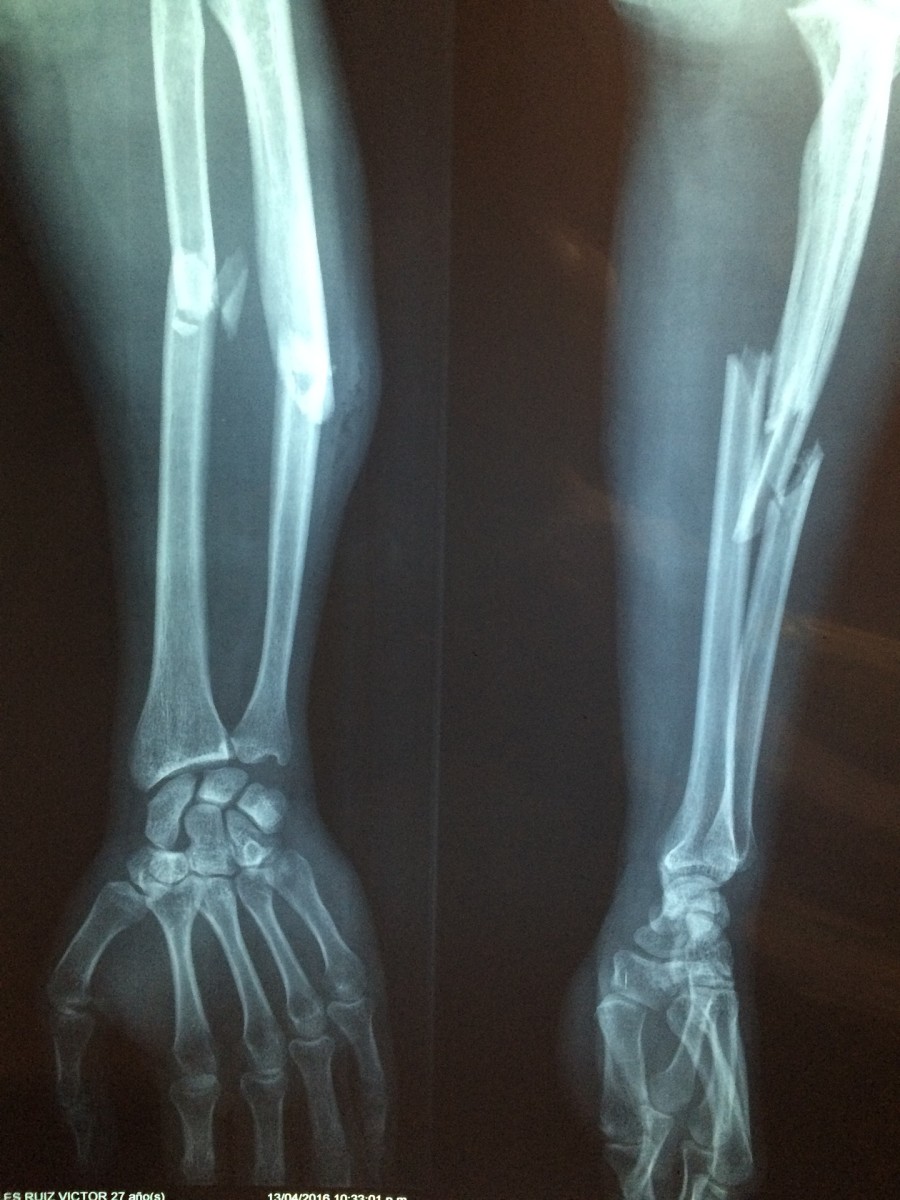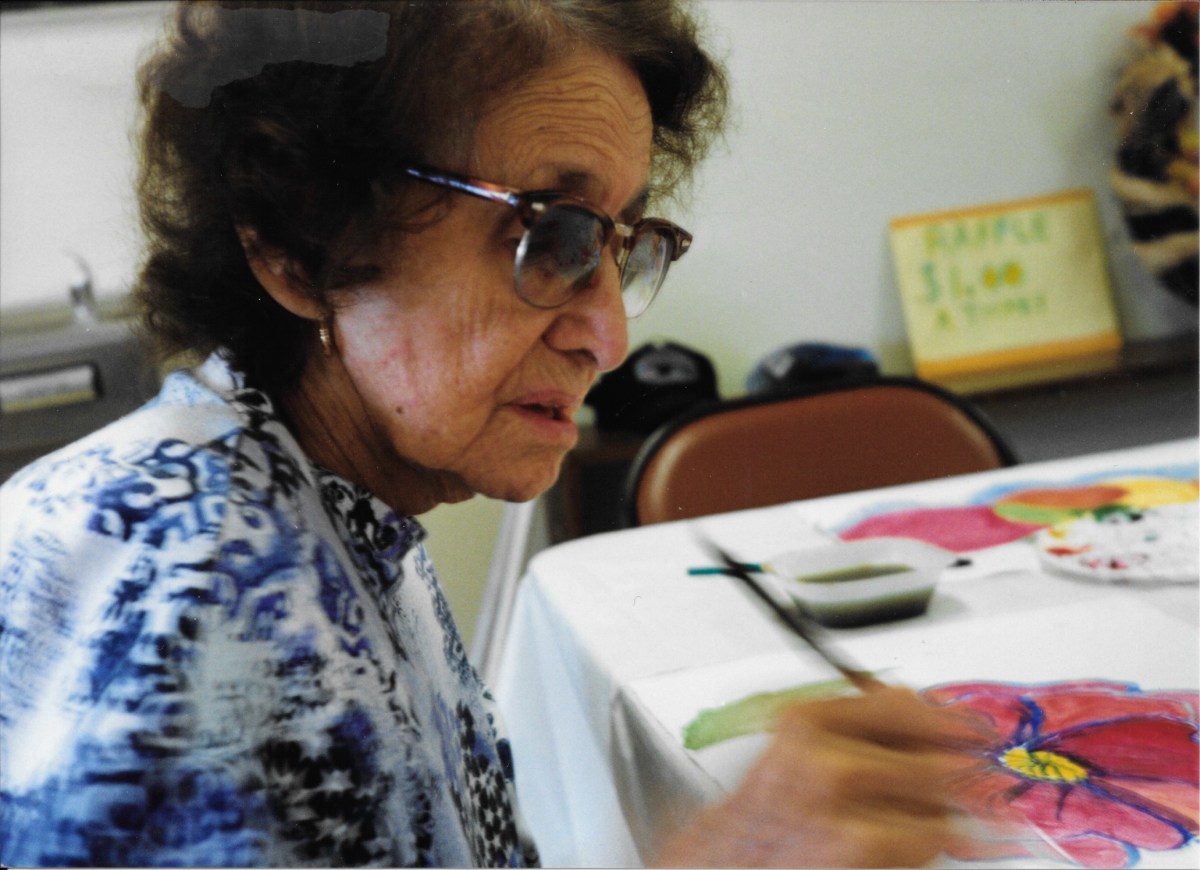How Bone Density Test Is Done - Interpreting Bone Density Scores
A bone mineral density (BMD) scan or bone densitometry is a screening test, which works by emitting low dose x-ray radiation to measure bone loss or the amount of calcium in the bones (bone calcium density). With the help of bone densitometry test, the orthopedic doctors can determine the presence of osteoporosis or risk of fractures due to aging and longevity. It is considered the best method to diagnose osteoporosis and is used especially for the hips and lower back. The test is painless and noninvasive and there is no risk of radiation exposure. Also, it must be noted that dual energy x-ray absorptiometry (a form of densitometry) is another means of measuring bone density used by ortho doctors, especially to detect osteoporosis. Osteoporosis is a disease that weakens bones with the gradual loss of calcium. This calcium loss causes the bones to become more fragile and to break easily in a fall. Most old women after menopause are affected by osteoporosis. Still, osteoporosis may also affect old men. Once medical treatment has been established, the bone density test continues to be effective when monitoring and diagnosing other bone related disorders.
Precautions To Be Taken Before Undergoing Bone Density Test:
- Before coming to have a bone density test performed, it is really necessary to stop eating any food and avoid taking any calcium supplements 24 hours before the exam.
- It is also recommended that the patient must wear light clothing without wearing any metal accessories such as watches, jewelry, or metal belts. Even if a patient comes wearing these items, the examiner removes these before the procedure is initiated.
- Also, it must be noted that if a person has recently undergone a test requiring injection of contrast material in the body, it is important to wait for 10 to 14 days before densitometry to get the optimal results.
- Again, it must be understood that pregnant women should not undergo this exam as it involves exposure to x-ray radiation.
- Breast-feeding mothers must inform the doctor about their status before the examination.
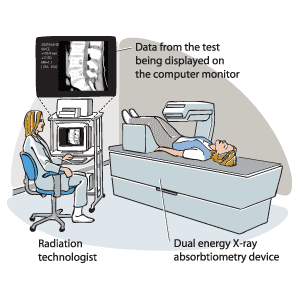
How Bone Density Test Is Done?
At the time of examination, a person is asked to undress and put on a gown. Once done, the patient is put in a supine position on radiography table. Legs are positioned on a padded box, so that the pelvis and lower back are flat on the table, to observe the hip and other areas to measure bone loss. The foot of the person is put in a brace that allows inward rotation of the hip. While the person is still, from underneath the table radiation is emitted which passes through the area to study. On top of the patient lies a detector, which moves along the body to click x-ray images. The detector measures the bone density and generates images, which appear on the computer for the evaluation by the radiation technologist. The test takes between 10 to 30 minutes and does not cause any pain to the patient.
Watch Live Bone Density Scan
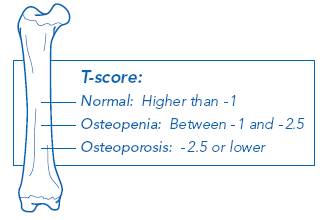
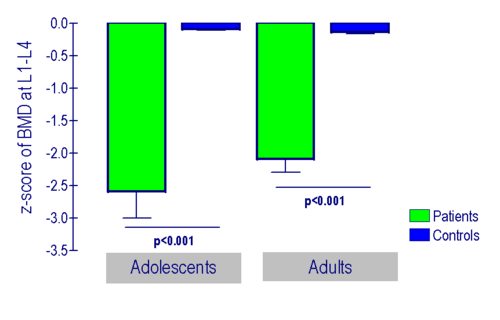
Interpreting Bone Density Scores
After the radiation technologist interprets the data from the bone mineral density test, he/she sends a report to the ortho doctor so that he can communicate the results to the patient. These results come with two parts and can be interpreted as:
- T score, which shows the patient's bone mass, compared with that of an adult of the same sex to total bone mass. If the score is above -1 is considered as normal and if between -1 and -2.5 is considered to be in the first stage of bone loss meaning osteopenia and if it is less than -2.5 is considered osteoporosis. T score measures the risk of fractures.
- Z score also shows the patient's bone mass but compared with other normal people of same size, sex, and age.
Finally, the orthopedic specialist informs the person if he/she needs to undergo further tests and what is the treatment he/she should follow.


